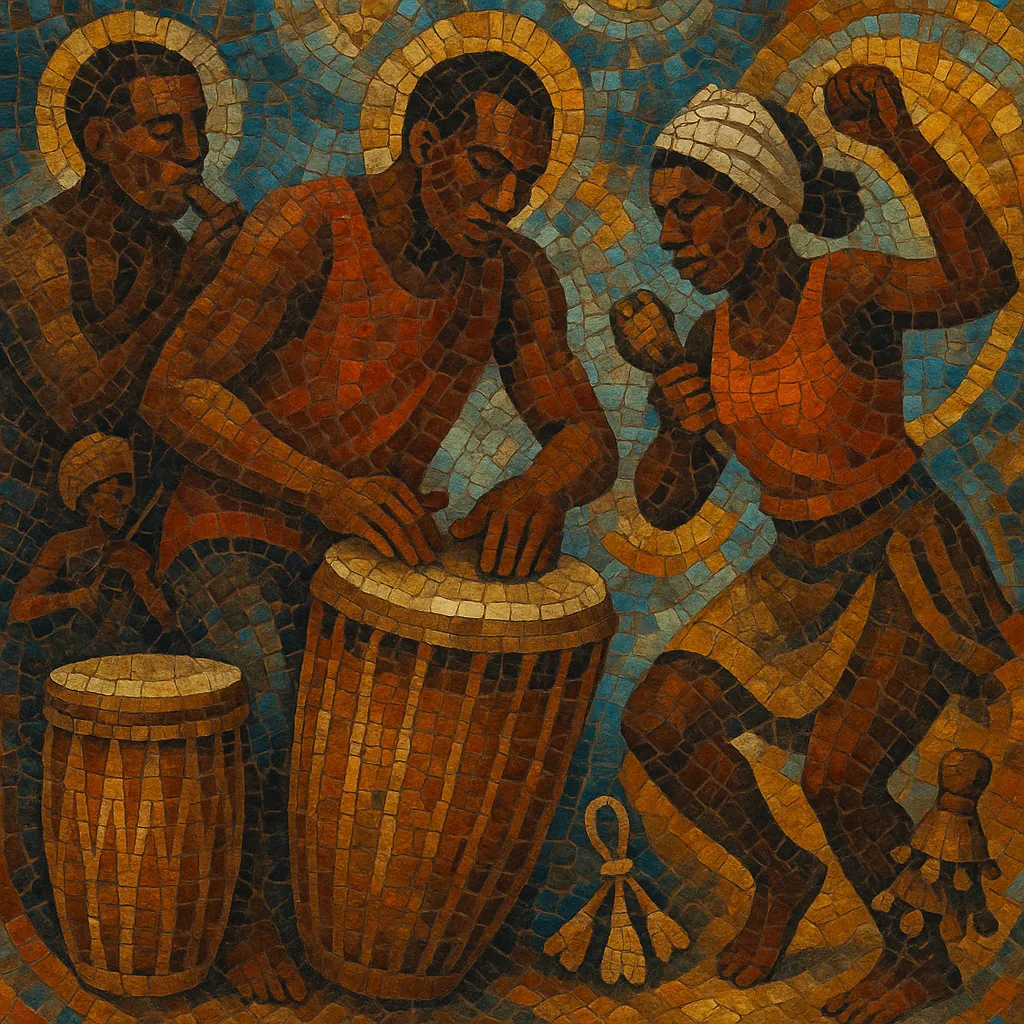Ngoma is a broad East–Central African drumming-and-dance tradition whose name (from Bantu languages via Swahili) refers simultaneously to the drum, the music, the dance, and the social event. In Tanzania especially, it encompasses many local styles performed by community troupes at weddings, initiation rites, harvest celebrations, healing ceremonies, and public commemorations.
Musically, ngoma is built on interlocking polyrhythms, call-and-response singing, and cyclical grooves coordinated with choreographed movement. Ensembles center on wooden hand drums (also called ngoma), rattles (kayamba and other shakers), ankle bells, whistles, handclaps, and sometimes coastal double-reed oboe (nzumari), lamellophones (ilimba/likembe), or bowed lutes (zeze). The aesthetic emphasizes communal participation, tight drummer–dancer interaction, and compelling timelines that invite dancing.
Ngoma predates colonial contact and crystallized as a set of community performance practices across the Swahili coast and the interior of present-day Tanzania. The term came to denote the drum itself and, by extension, the ritual or festivity at which drumming, singing, and dance occur. In agrarian and pastoral communities, ngoma accompanied rites of passage, healing, praise, work coordination, and dispute mediation.
Early ngoma ensembles centered on families of hand drums carved from local hardwoods with animal skins, interlocked into cyclic patterns over timeline bell or shaker parts. Lead singers improvised praise and social commentary while the chorus answered in refrain. Dancers cued dynamic changes, and the lead drummer signaled transitions with breaks, accelerations, and dialogic rhythms. The performance integrated costume, gesture, and call-and-response to reinforce social cohesion.
During the colonial era, ngoma was both regulated and showcased, leading to staged formats and standardized troupe structures. In the post-independence period, national troupes and arts institutes documented regional ngoma forms, adapting them for theatres and festivals while maintaining community practice. Urbanization introduced new settings (parades, civic events, stage shows) and small-ensemble variants alongside village ceremonies.
Ngoma continues to thrive in community contexts while informing contemporary Tanzanian genres. Coastal and island traditions blended ngoma rhythms with taarab to produce small-ensemble styles like kidumbak. In Dar es Salaam’s neighborhoods, ngoma patterns fed into amplified, street-level mchiriku and later into the fast-paced electronic style singeli. Dance-band idioms (muziki wa dansi) have also drawn on ngoma movement and rhythmic vocabulary for stage presentation.


